Kaimuki Hawaii
News Item- Powered by MBC NewsMaker
Winter Camping Fun At The Honolulu Zoo
- Tweet

WINTER CAMPING FUN AT THE HONOLULU ZOO
Close this year with a roar with the Honolulu Zoo Society's winter camps. Put away those video games and hop over to the Honolulu Zoo and experience the great outdoors. Keiki will gain a lion's share of animal knowledge, while having fun at one of the Zoo's three winter camps: Camp Wildlife Koa, Camp ‘Imi Loa or Camp Menehune.
The two-week winter camp will feature two new weekly themes:
• Zoo Ohana -- Celebrate the animal ohana at the zoo and learn about family groups during this family filled time of year.
• Farewell Old Year -- Learn about extinct and endangered animals, while kicking off the New Year with resolutions of conversation and protecting our animal friends.
These two curricula will engage keiki through games, crafts discussions, zoo tours and technology.
Camp Wildlife Koa (Ages 9-11)
Camp Wildlife Koa immerses keiki in the vast world of animals. Through hands-on lessons complete with animal biofacts, behind the scenes tours, interactive technologies, craft actives and games, keiki will gain a wealth of knowledge about different animals and the environments in which they live.
Camp `Imi Loa (Ages 6-8)
Camp `Imi Loa engrosses keiki in the fascinating kingdom of animals with fun, age appropriate lessons using tactile biofacts, craft activities, songs, stories, behind the scenes tours, keeper talks and games centered around the theme of the week.
Camp Menehune (Ages 4 & 5)
Camp Menehune introduces keiki to the animal kingdom with exciting and engaging activities and entertaining lessons through sensory biofacts, craft activities, songs, stories, animal tours, keeper talks and games all oriented around age appropriate weekly themes.
Keiki enrolled in Camp Menehune will be required to provide a copy of his/her birth certificate.
All camp schedule and fees as are follows; Honolulu Zoo Society members receive a discounted rate on all camps.
Class Fee (per week):
Members: $250
Non-members: $300
Aftercare Fee (per week):
Members: $50
Non-members: $60
Class schedule:
Zoo Ohana: December 21 -- 24, 2015, 8:00 a.m. -- 2:30 p.m.
Farewell Old Year: December 28 -- 31, 2015, 8:00 a.m. -- 2:30 p.m.
Aftercare pick-up schedule:
December 21 -- 24, 2015 4:00p.m. and 5:30 p.m.
December 28 -- 31, 2015 4:00p.m. and 5:30 p.m.
*Classes will not be held on Christmas Day (12/25) or New Year's Day (1/1).
Keiki classes are held rain or shine unless otherwise noted. All programs require participants to pre-register and wear closed-toe covered shoes during their time at the Zoo. Additionally, all participants must be potty trained.
For more information, to view the camps' weekly themes or to register for Camp Wildlife Koa, Camp `Imi Loa or Camp Menehune programs, visit www.honoluluzoo.org.
About the Honolulu Zoo Society
Founded in 1969, the Honolulu Zoological Society is a 501(c)(3) tax-exempt non-profit organization whose purpose is to support the Honolulu Zoo and its mission, to educate the public about the importance of wildlife and conservation issues, and to provide for the needed capital improvements to the Zoo through fundraising efforts. For information on how to support the Honolulu Zoological Society, visit www.honoluluzoo.org or call (808) 926-3191.
ABOUT HONOLULU ZOO
Over 600,000 people visit the Honolulu Zoo annually. The zoo is administered by the City & County of Honolulu through the Department of Enterprise Services. The Honolulu Zoo Society provides fundraising and educational services for the zoo.
It is the largest zoo within a radius of 2,300 miles and unique in that it is the only zoo in the United States originating from a King's grant of royal lands to the people. King David Kalakaua, Monarch of Hawai`i from 1874 to 1891, made lands of the Leahi Land Holdings available in 1876 to the people for a thirty year lease. That year, a "Kapiolani Park Association" of two hundred subscriber members assumed the administration of the three hundred-acre park. The marshy parcel was a muddle of fishponds, lagoons and islands where King Kalakaua maintained his collection of exotic birds. In 1877 the area was named after the King's wife and opened as Queen Kapiolani Park.
MISSION STATEMENT (Back to the top)
The mission of the Honolulu Zoo is to inspire the stewardship of our living world by providing meaningful experiences to our guests. The Zoo emphasizes Pacific Tropical ecosystems and our traditional values of malama (caring) and ho'okipa (hospitality).
HOURS (Back to the top)
9:00 am to 4:30 pm daily
Closed Christmas Day
MAP Back to the top
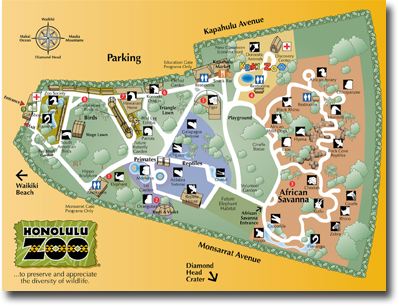
MEMBERSHIP
Founded in 1969 as the Zoo Hui, the Honolulu Zoo Society of today is governed by a volunteer Board of Directors and employs a permanent staff. Membership consists of people representing families and individuals from across the State of Hawaii and the continental U.S. More....
VOLUNTEER PROGRAM (Back to the top)
If you care about animals and the environment and have the desire to get involved, here is some information about how you can join our Zooper volunteer team! More...
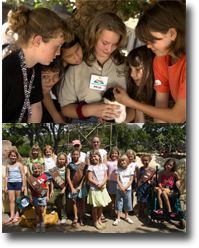 ACTIVITIES & PROGRAM (Back to the top)
ACTIVITIES & PROGRAM (Back to the top)School Group Programs:
- School Outreach - Zoo To You
- School Groups - Zoo Field Trips
- Art in the Zoo
- Dinner Safari
- Star Gazing at the Zoo
- Vacation Adventures
- PreVacation Adventures
- Honolulu Zoo Strollers
- Birthday Parties
- Snooze in the Zoo
- Twilight Tour
- Junior Zoo Keeper
- Keiki Zoo Keeper
- Breakfast with a Keeper
- Volunteer Program
- Interpretive Services
Click here to get more info on activities and programs on Honolulu Zoo website.
FAMILY PROGRAM REGISTRATION FORM Back to the top
HISTORY OF HONOLULU ZOO (Back to the top)
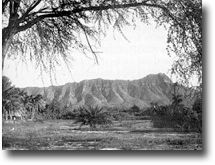 Around 600,000 people visit the Honolulu Zoo annually. It is the largest zoo within a radius of 2,300 miles and unique in that it is the only zoo in the United States originating from a King's grant of royal lands to the people. King David Kalakaua, Monarch of Hawai`i from 1874 to 1891, made lands of the Leahi Land Holdings available in 1876 to the people for a thirty year lease. That year, a "Kapiolani Park Association" of two hundred subscriber members assumed the administration of the three hundred-acre park. The marshy parcel was a muddle of fishponds, lagoons and islands where King Kalakaua maintained his collection of exotic birds. In 1877 the area was named after the King's wife and opened as Queen Kapiolani Park.
Around 600,000 people visit the Honolulu Zoo annually. It is the largest zoo within a radius of 2,300 miles and unique in that it is the only zoo in the United States originating from a King's grant of royal lands to the people. King David Kalakaua, Monarch of Hawai`i from 1874 to 1891, made lands of the Leahi Land Holdings available in 1876 to the people for a thirty year lease. That year, a "Kapiolani Park Association" of two hundred subscriber members assumed the administration of the three hundred-acre park. The marshy parcel was a muddle of fishponds, lagoons and islands where King Kalakaua maintained his collection of exotic birds. In 1877 the area was named after the King's wife and opened as Queen Kapiolani Park.Park Association members supported the unpromising park with the help of royal grants through 1894. In those days, the park's primary attractions were the exotic bird collection and horse racing, especially the running of the Rosita Cup, held annually on King Kamehameha Day.
Peacocks, trees, and palms were added to the park, with plantings obtained from Golden Gate Park in San Francisco. Roads and trolley lines were extended to include "Waikiki Road at Makee", today's intersection of Kalakaua and Kapahulu Avenues. The park was permanently established in 1896 and the City and County of Honolulu assumed administration of city parks in 1914. Today, the zoo continues under the administration of the City, but as a part of the Department of Enterprise Services.
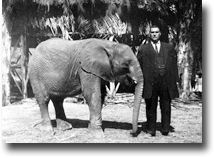 During 1914 to 1916, the young administrator of Parks and Recreation, Ben Hollinger began collecting animals for exhibit at Kapiolani Park. The first animals included a monkey, a honey bear and some lion cubs. In 1916 Daisy, a friendly African elephant arrived in Honolulu on the Niagra, a steamship on it's way from Australia to Canada transporting animals for mainland zoos and circuses. Ben Hollinger, pictured at left with Daisy, persuaded city merchants to purchase Daisy and for years she delighted Honolulu children. Many recall riding as a youngster around the park on her back.
During 1914 to 1916, the young administrator of Parks and Recreation, Ben Hollinger began collecting animals for exhibit at Kapiolani Park. The first animals included a monkey, a honey bear and some lion cubs. In 1916 Daisy, a friendly African elephant arrived in Honolulu on the Niagra, a steamship on it's way from Australia to Canada transporting animals for mainland zoos and circuses. Ben Hollinger, pictured at left with Daisy, persuaded city merchants to purchase Daisy and for years she delighted Honolulu children. Many recall riding as a youngster around the park on her back.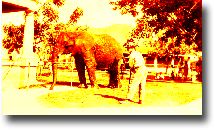 Daisy's career ended tragically in 1933, when for unexplained reasons, she attacked and trampled to death her keeper George Conradt. She was put down by police marksmen and buried at sea. Pictured right are Daisy and her keeper George Conradt. (See recent newspaper account.)
Daisy's career ended tragically in 1933, when for unexplained reasons, she attacked and trampled to death her keeper George Conradt. She was put down by police marksmen and buried at sea. Pictured right are Daisy and her keeper George Conradt. (See recent newspaper account.)During the Depression years, the Zoo faltered and nearly closed. Additional animals still came to the zoo, including the following animals purchased from an animal dealer to arrive November 29, 1949 aboard the freighter, the American Wholesaler, out of Los Angeles: a giraffe, an ostrich, emus, an elephant, a Bactrian camel, 3 sea lions, several other bird species birds, spider monkeys and a tortoise. However, the grounds and facilities continued to fall into disrepair. In 1947, the donation of a camel, elephant, chimpanzees and deer by the Dairymen's Association sparked a renewal for the Honolulu Zoo. During this time the City took important steps to set the course for today's Zoo. It approved a Master Plan that determined the boundaries of the present 42-acre site at the north end of Kapiolani Park. It hired its first full-time director, Paul Breese, and a staff of thirteen. The animal collection, increased by purchase, trade and donations, was housed in newly constructed facilities, some of which still provide foundations for newer exhibits. In 1952 the Zoo's design was revised, and again modified to take on the shape and form seen in the "old zoo" exhibits like the small mammal row along Kapahulu Avenue.
WIKIPEDIA INFORMATION
It is the only zoo in the United States to be established by grants made by a sovereign monarch. Built on part of a 300 acres (121 ha) royal park in Waikiki known as Queen Kapiolani Park, the Honolulu Zoo now features over 1,230 animals in specially designed habitats.
Over 601,510 people visit the zoo annually. The Honolulu Zoo Society provides fundraising and educational services for the zoo. The zoo is administered by the City & County of Honolulu through the Department of Enterprise Services.
Source: Wikipedia, the free encyclopedia
Questions? Ready for an appointment?

- RELATED LINKS
 Honolulu Zoo Society
Honolulu Zoo Society
Our mission is to foster an appreciation of our living world by supporting and advocating environmental education, recreation, biological study and conservation activities at the Honolulu Zoo.
 Honolulu Zoo
Honolulu Zoo
View video!. Over 600,000 people visit the Honolulu Zoo annually. The Honolulu Zoo Society provides fundraising and educational services for the zoo. The zoo is administered by the City & County of Honolulu through the Department of Enterprise Services.
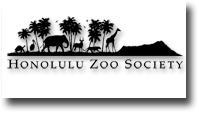
 Kaimuki Hawaii.Com Home Page
Kaimuki Hawaii.Com Home Page
View our featured events, news, businesses and primary links on our home page. Featured Sponsors
Featured Sponsors
Great offers from our sponsors who support the Kaimuki Honolulu, Hawaii community. More...
Kaimuki Hawaii Directory
View Kaimuki, Hawaii primary directories. businesses, non profits, public, government and jobs. Calendar
Calendar
Check out things to do in Kaimuki on the calendar of events. News and Newsletters
News and Newsletters
Keep up with the latest news and happenings in your Kaimuki community. Kaimuki Hawaii Featured Pages
Kaimuki Hawaii Featured Pages
View our directory of feature pages showcasing all the great things Kaimuki, Honolulu, Hawaii has to offer. Go Green in Kaimuki, restaurants, shopping, WiFi Hot Spots, fitness, health, real estate, home and garden, 80+ more directories... More...
Terms of Use / Legal Disclaimer / Privacy Statement
Site Designed and Managed by MacBusiness Consulting
